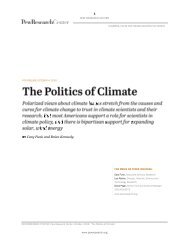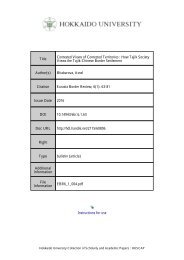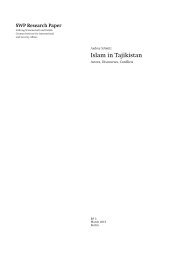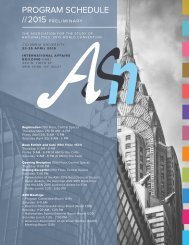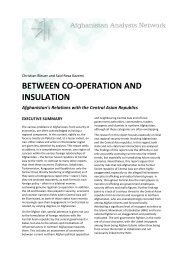Afghanistan in 2015 1
mM5Zmj
mM5Zmj
Create successful ePaper yourself
Turn your PDF publications into a flip-book with our unique Google optimized e-Paper software.
24<br />
<strong>Afghanistan</strong> <strong>in</strong> <strong>2015</strong><br />
BIGGEST PROBLEMS: NATIONAL LEVEL BY REGION<br />
Central<br />
/ Kabul<br />
East<br />
South<br />
East<br />
South<br />
West<br />
West<br />
North<br />
East<br />
Central /<br />
Hazarajat<br />
North<br />
West<br />
(%) (%) (%) (%) (%) (%) (%) (%)<br />
INSECURITY 55 47 41 28 38 40 53 37<br />
CORRUPTION 17 26 25 36 24 26 18 25<br />
UNEMPLOYMENT 34 14 13 16 21 20 31 21<br />
POOR ECONOMY 13 20 14 12 11 10 9 14<br />
EDUCATION 4 6 6 10 5 4 4 8<br />
TALIBAN 3 4 10 4 7 6 9 7<br />
POVERTY 7 4 3 3 6 6 10 8<br />
Fig. 1.10: Q-5A/B. In your view, what are the two biggest problems fac<strong>in</strong>g <strong>Afghanistan</strong> as a<br />
whole? (Q-5A and Q-5B responses comb<strong>in</strong>ed)<br />
1.3 AFGHANISTAN’S BIGGEST PROBLEMS: LOCAL LEVEL<br />
Key Question<br />
Q-4A/B. In your view what are the two biggest problems <strong>in</strong> your local area?<br />
When asked about local problems, Afghans aga<strong>in</strong> cited a wide range of specific concerns that were<br />
grouped <strong>in</strong>to general categories. These categories <strong>in</strong>clude:<br />
• Public services: electricity (20.5%), roads (17.8%), dr<strong>in</strong>k<strong>in</strong>g water (16.8%), education/literacy<br />
(11.0%), healthcare (9.6%), and water for irrigation (2.9%).<br />
• Economy: unemployment (31.2%), poor economy (6.7%), poverty (5.9%), high prices (5.5%),<br />
and reconstruction (2.4%).<br />
• Security: <strong>in</strong>security (22.0%), crime (3.1), and Taliban (2.1%).<br />
• Governance: corruption (3.7%) and weak government (1.4%). 4<br />
Public services emerged as the most commonly cited local problem and most respondents (56.3%) cite<br />
public services as one of their two responses.<br />
The most frequently cited specific problem is unemployment (31.2%), at a rate similar to that of 2014<br />
(33.1%) (Fig. 1.11). However, <strong>in</strong>security <strong>in</strong>creased from 14.2% of responses <strong>in</strong> 2014 to 22.0% <strong>in</strong><br />
<strong>2015</strong>, the highest rate recorded s<strong>in</strong>ce the survey began. After unemployment and <strong>in</strong>security, Afghans<br />
cite several specific deficiencies <strong>in</strong> public services, <strong>in</strong>clud<strong>in</strong>g electricity (20.5%), roads (17.8%), and<br />
dr<strong>in</strong>k<strong>in</strong>g water (16.8%).



